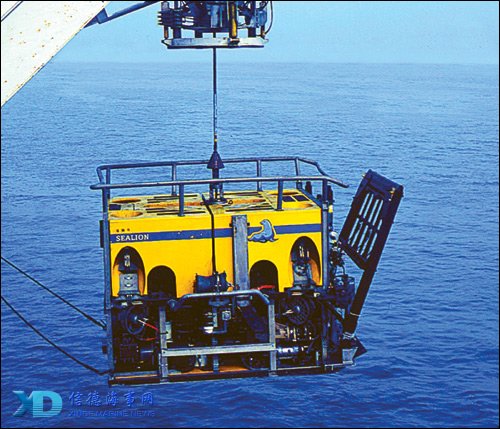
Driven by the rapid development of telecommunications and the demand for high-speed internet, China's submarine cable network has maintained a strong growth momentum over recent years. And the network has even further room to grow as the global undersea cable market is projected to reach a value of $5.14 billion by 2021, according to global market consultancy firm Technavio.
China's submarine cable industry has been developing at a fast pace in recent years, and Chinese vendors have been identified as key players around the globe.
Huawei Marine Networks Co, a joint venture established by Chinese telecommunications provider Huawei Technologies Co and Global Marine Systems Ltd, ranked among the top five suppliers of submarine cables last year, said a report published by London-headquartered market research firm Technavio in October 2017.
The global submarine fiber cable market is expected to grow at an annual rate of nearly 5 percent over the next few years, which will be driven by a further increase in internet use and cloud technology.
Although some major foreign vendors such as Alcatel Submarine Networks and TE SubCom have recently been maintaining growth momentum in the market, Huawei Marine has been in the market since 2008, said Winston Qiu, founder and managing editor of industry information site submarinenetworks.com.
For domestic telecommunications operators, growing demand for global network capacity "drives Chinese operators to build international cables," and other Chinese firms besides Huawei have also tapped into this sector, Qiu told the Global Times on Friday.
Undersea cables promise faster internet speed. And as a result, governments and tech companies have been actively pushing forward cable projects around the world.
U.S. search giant Google Inc is currently mulling over a new cable that will connect Singapore and Australia and boast a capacity of 18 terabits per second, meaning it will be able to transmit the equivalent of 7.2 million high-definition online movies simultaneously from Singapore to Sydney, Singaporean telecommunications company Singtel announced in April 2017. The project is expected to be finished by mid-2019.
Also, U.S. tech giants Microsoft and Facebook agreed to partner up on the development, design and implementation of a 6,437-kilometer-long subsea cable connecting the U.S. state of Virginia and Bilbao in Spain, Microsoft said in a post published on its website in September 2017.
The Chinese government has been working on goals related to internet capacity, aiming to reach 20 terabits per second by 2020 and 48 terabits per second by 2025 in areas around the world, according to guidelines published on the website of the State Council, China's cabinet, in 2016.
Those moves will support connectivity among countries and regions along the routes of the Belt and Road (B&R) initiative.
Also by 2025, China will begin building four major "information corridors" to connect the Pacific Ocean, Central and Eastern Europe, West and North Africa, Southeast Asia and other regions.
"China has built undersea cables connecting the country with the U.S. and Japan before," said Xiang Ligang, CEO of telecommunications industry site cctime.com.
"We now focus on more and more countries and regions along the B&R [routes]," he told the Global Times.
Furthermore, Huawei Marine recently announced that the company will soon finish a study on a new submarine cable system connecting South Africa, Kenya, Djibouti, Somalia and Pakistan, South African news site moneyweb.co.za reported on Tuesday.
The Chinese company has engaged in 72 projects so far covering 49,226 kilometers across Asia and the Pacific, Europe, the Americas, the Middle East and Africa, according to its website.
Sources:www.ecns.cn
Please Contact Us at:
admin@xindemarine.com

